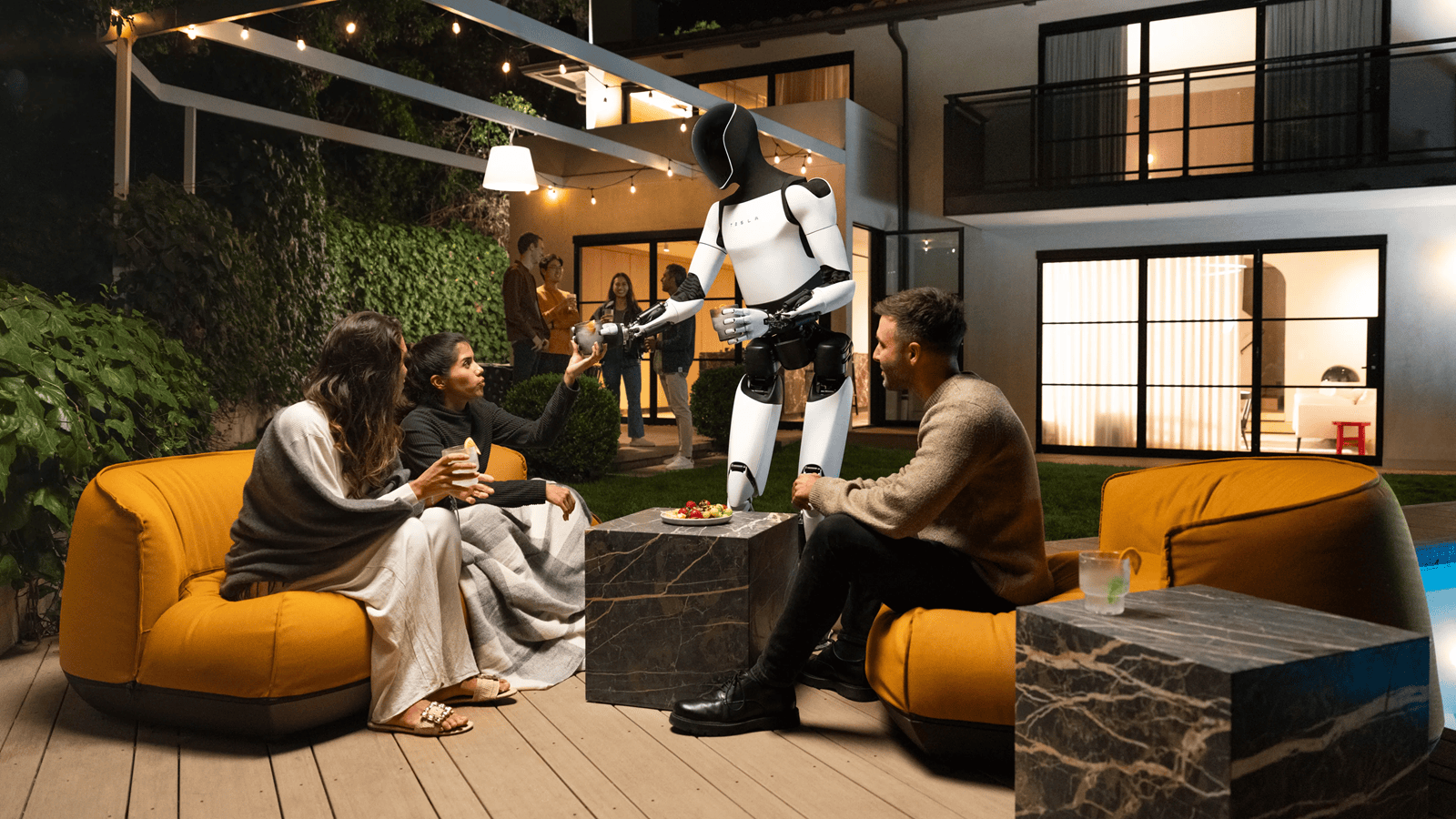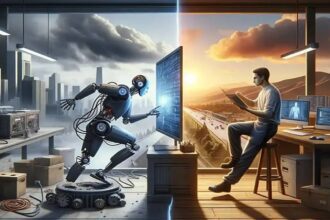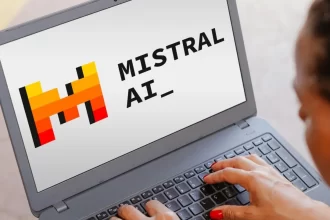Elon Musk has never been one to shy away from bold statements. Over the years, Tesla has captured the world’s attention with its groundbreaking electric vehicles, promises of fully autonomous cars, and even the launch of a flamethrower through The Boring Company. But none of Musk’s ventures may prove as audacious—or as consequential—as the development of humanoid robots, particularly the Tesla Optimus Bot. Despite the fanfare surrounding its recent public demonstrations, questions about the true capabilities of these machines persist. What is the current state of the Tesla Bot, and how far is Tesla from creating a fully autonomous, functional robot for everyday use?
A Glimpse of the Future at “We, Robot”
Tesla’s Optimus Bot took center stage at the recent “We, Robot” event, a showcase designed to highlight the latest advancements in AI, robotics, and Tesla’s vision for a future filled with humanoid robots. From the outset, the event seemed geared toward wowing investors and fans alike. The Optimus Bots roamed around the event space, interacting with guests, serving drinks, dancing, and even chatting with those present. Videos of the bots spread quickly across social media, leading to a flurry of speculation and excitement about the potential of Tesla’s humanoid robots.
However, the awe that many attendees experienced soon gave way to skepticism. Reports from major outlets such as Bloomberg and The Verge quickly revealed that the Tesla Optimus Bots were, in fact, being controlled by humans. While they could walk independently—thanks to Tesla’s advanced AI and robotic engineering—the bots’ interactions with attendees were not autonomous. Instead, they were guided by human operators stationed remotely, raising questions about the actual state of the technology and Tesla’s transparency regarding its robot demonstrations.
The Reality Behind the Show
The revelation that the Tesla Bots were tele-operated during the event sparked controversy. While Tesla made no overt claims that these bots were fully autonomous, the context of the event and the way the bots were presented seemed to suggest otherwise. For instance, the bots engaged in fluid conversations, made hand gestures in real time, and appeared to respond to verbal cues as if powered by advanced AI. This led many to wonder if they were witnessing a giant leap forward in humanoid robotics, with some attendees even speculating that the bots were controlled by Grok, the AI chatbot developed by Musk’s xAI.
Yet, as Morgan Stanley analyst Adam Jonas pointed out, the bots relied heavily on tele-operations. Attendees and analysts noted the discrepancy between the seemingly advanced capabilities of the robots and the fact that each bot had a different voice, with synchronized responses and hand gestures that hinted at human control. Finally, there have been instances where the robots have acknowledged human assistance, such as in a video where one Optimus stated, “Today, I am assisted by a human.”
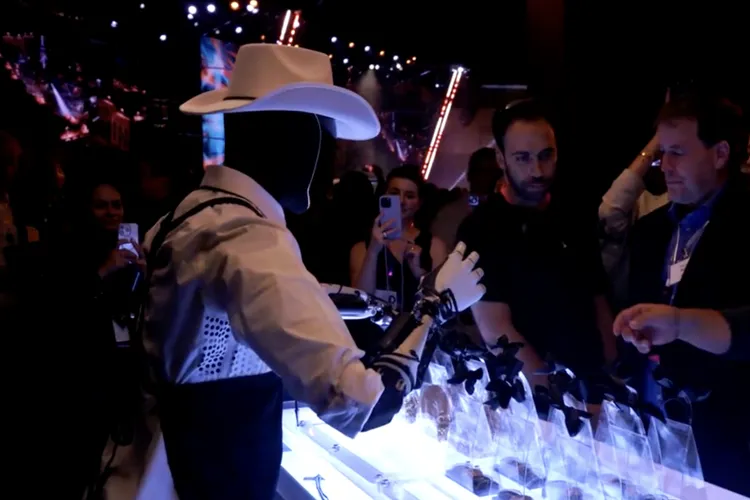

The Humanoid Robot Dream
Despite the criticism, Tesla’s ambitions for the Optimus Bot remain sky-high. During the event, Musk reiterated his vision for a future in which everyone could own their own humanoid robot—comparable to the famous droids from Star Wars, like R2-D2 and C-3PO. He claimed that the Optimus Bots would one day be able to do everything from household chores to walking your dog, babysitting your kids, and even serving as personal companions. Musk’s bold predictions included the possibility that these robots could be sold for $20,000 to $30,000 each, with Tesla eventually selling millions of units per year.
However, the current gap between the marketing vision and the technological reality is significant. While the robots demonstrated impressive dexterity and the ability to navigate a crowd without falling, they are still far from achieving the fully autonomous, multifunctional status that Musk envisions. The tele-operations reveal a critical weakness in Tesla’s approach: the technology required to make robots truly autonomous and capable of performing complex, real-world tasks without human intervention is not yet there.
The Optimus Bot’s Market Potential
Despite the challenges, there are reasons to be optimistic about Tesla’s long-term prospects in the robotics space. Tesla has already revolutionized several industries with its electric vehicles, battery technology, and manufacturing processes, and many believe that the company is well-positioned to do the same for robotics. As Canaccord Genuity analyst George Gianarikas pointed out, the developmental progress displayed by the Tesla Bots at the “We, Robot” event was remarkable, even if the robots were still under human control. Tesla’s expertise in motor design, battery technology, and mechanical engineering gives it a potential edge over competitors in the burgeoning field of robotics.
Moreover, Musk has stated that the robotics industry currently lacks a well-developed supply chain, which could work in Tesla’s favor. If Tesla can leverage its vertically integrated manufacturing model, which has proven successful in its electric vehicle business, it may be able to produce robots at scale and at a lower cost than its competitors. This could make the Tesla Optimus Bot an attractive option for businesses and consumers alike, especially if Tesla can deliver on its promise of a robot priced between $20,000 and $30,000.
Investor Reactions and the Path Forward
Not everyone, however, is convinced that Tesla will be able to bridge the gap between its vision and the current state of its technology. Following the “We, Robot” event, Tesla’s stock dropped by 11%, likely due to a combination of factors, including concerns over the timeline for Tesla’s Robotaxi project and the lack of concrete technological updates on its advanced driver assistance system, Full-Self Driving (FSD). The disappointing performance of the Optimus Bots likely contributed to this decline, as some investors were left questioning whether the humanoid robots would be ready for market in the near future.
Nonetheless, some investors remain undeterred. Omar Qazi, a prominent Tesla influencer, defended the progress made by the Tesla Bots, arguing that even tele-operated robots are a significant achievement. He pointed out that getting a robot to walk through a crowded event without causing harm or malfunctioning is no small feat, regardless of whether it was controlled by a human. Others, like Lux Capital cofounder Josh Wolfe, were more critical, calling the demonstration a “parlor trick” and suggesting that Tesla had been less than transparent about the robots’ true capabilities.
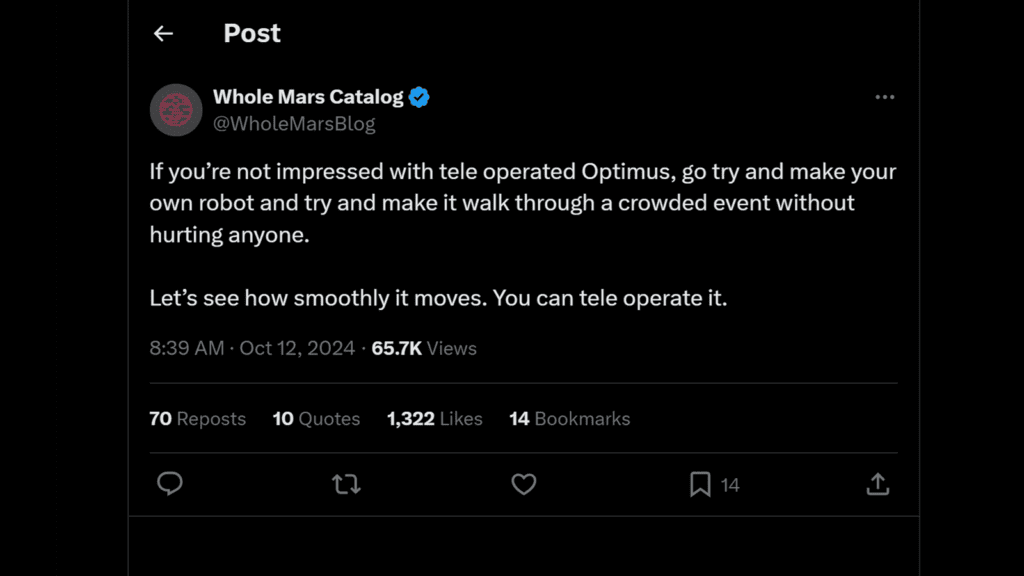

The Challenges of Autonomy
The challenges of creating a fully autonomous humanoid robot are immense. While Tesla has made strides in AI, the level of complexity required for a robot to independently navigate and perform tasks in the real world far exceeds what has been achieved so far. The fact that the Tesla Optimus Bots are still reliant on human operators highlights the gap between Musk’s vision and the current technological landscape.
The road to full autonomy for humanoid robots will likely require breakthroughs in several areas, including AI, machine learning, sensor technology, and energy efficiency. Tesla has already demonstrated an ability to push the boundaries of innovation, but the development of fully autonomous robots will take time. In the meantime, Tesla’s focus may need to shift toward refining the mechanical and engineering aspects of its robots while continuing to improve its AI capabilities.
Conclusion
The Tesla Optimus Bot represents an ambitious and potentially transformative vision of the future, where humanoid robots assist us in our daily lives. However, the “We, Robot” event revealed the current limitations of the technology, as Tesla’s bots were still heavily reliant on human operators. While the company has made impressive strides in robotic engineering, it is clear that there is still a long way to go before the Optimus Bot can achieve the level of autonomy and functionality that Musk envisions.
Despite these challenges, Tesla remains well-positioned to capitalize on the emerging robotics market. With its expertise in manufacturing, battery technology, and AI, Tesla has the potential to become a leader in the development of humanoid robots. Whether the Optimus Bot can live up to its lofty promises remains to be seen, but one thing is clear: Tesla is once again pushing the boundaries of what technology can achieve, and the world is watching closely to see what comes next.



